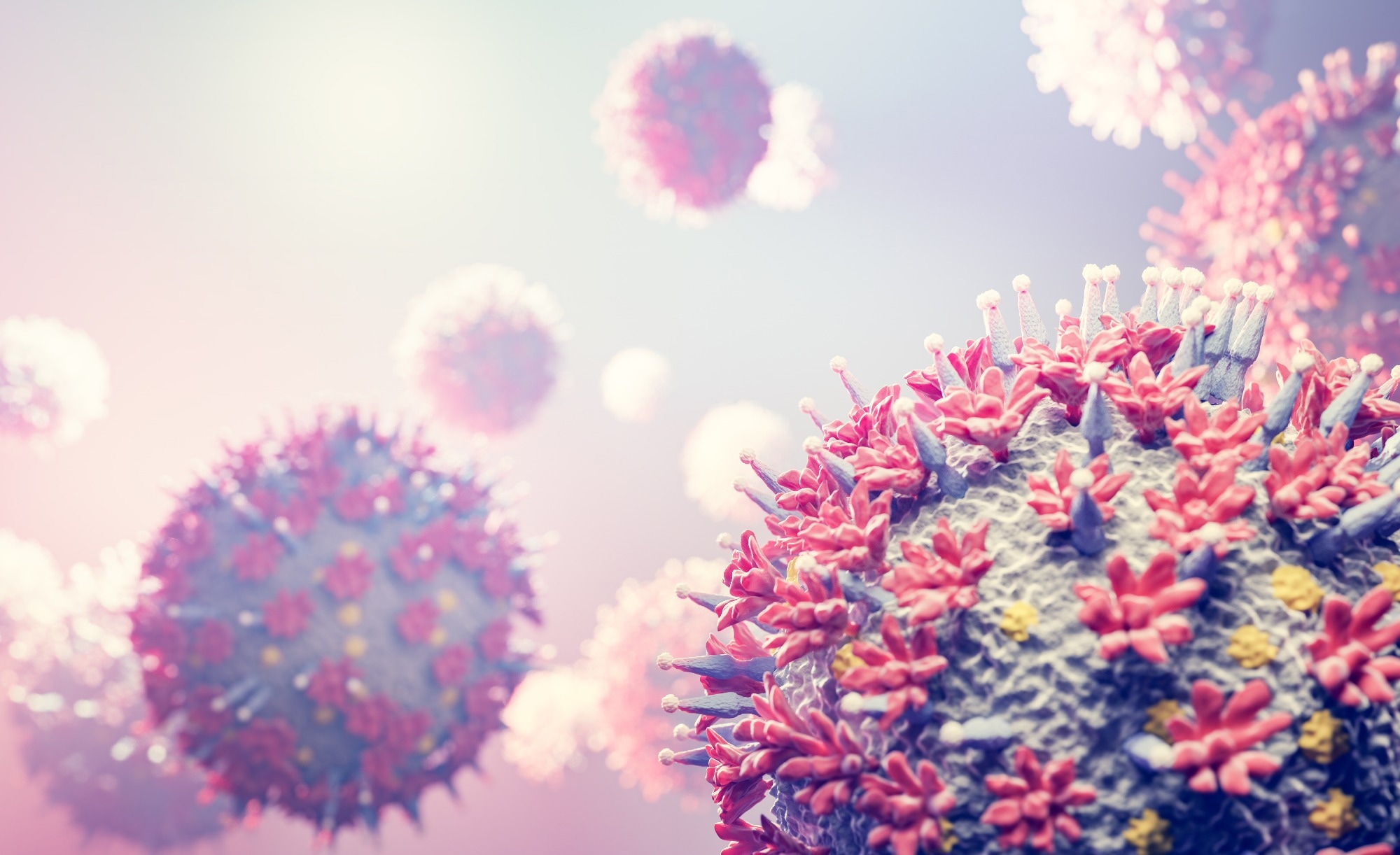In a recent study posted to the bioRxiv* preprint server, researchers evaluated the antimicrobial efficiency of two commercially available disinfectants containing quaternary ammonium compounds against influenza A virus (hemagglutinin 1 neuraminidase 1 (H1N1)), severe acute respiratory syndrome coronavirus 2 (SARS-CoV-2), and human coronavirus 229E.
 Study: Residual Sanitization of Three Human Respiratory Viruses on a Hard, Non-Porous Surface. Image Credit: PHOTOCREO Michal Bednarek/Shutterstock
Study: Residual Sanitization of Three Human Respiratory Viruses on a Hard, Non-Porous Surface. Image Credit: PHOTOCREO Michal Bednarek/Shutterstock

 *Important notice: bioRxiv publishes preliminary scientific reports that are not peer-reviewed and, therefore, should not be regarded as conclusive, guide clinical practice/health-related behavior, or treated as established information.
*Important notice: bioRxiv publishes preliminary scientific reports that are not peer-reviewed and, therefore, should not be regarded as conclusive, guide clinical practice/health-related behavior, or treated as established information.
Background
Seasonal human respiratory viruses such as rhinoviruses, coronaviruses, influenza, and respiratory syncytial virus cause morbidity and loss of productivity and result in school absenteeism annually. The coronavirus disease 2019 (COVID-19) pandemic resulted in the initiation of worldwide disease mitigation measures such as social distancing, mask-wearing, hand washing, and disinfection of surfaces.
Enveloped respiratory viruses such as SARS-CoV-2 and influenza are thought to be transmitted primarily through airborne aerosols, and their survival in aerosol droplets is dependent on factors such as absolute and relative humidity and temperature. SARS-CoV-2 is considered viable after deposition on non-porous surfaces in low temperature and humidity conditions for several days.
Enveloped viruses are susceptible to inactivation by disinfectants containing alcohol, quaternary ammonium compounds, and surfactants. However, it is important to evaluate the antimicrobial effectiveness of commercially available disinfectants to ensure that self-sanitizing claims of disinfectants containing quaternary ammonium compounds are valid.
About the study
In the present study, the researchers evaluated the self-sanitizing properties and antimicrobial effectiveness of two quaternary ammonium compound-containing commercially available disinfectant sprays in situations involving abrasion of surfaces and reintroduction of the viral pathogen. H1N1 influenza A virus, the USA-WA1/2020 isolate of SARS-CoV-2, and human coronavirus 229E were used to test the efficiency of two disinfectants — test formulations A and B (TF-A and TF-B). A control consisting of sterile deionized water was also used.
Pre-sanitized glass carriers were sprayed from a distance of six to eight inches at a 45° angle using a spray device supplied by the disinfectant manufacturer. All carriers were coated five times with the disinfectant or control and allowed to cure overnight at 45% to 48% humidity and 20–23°C temperature. Carriers that exhibited 100% coverage after curing were used for the abrasion test. One carrier per disinfectant and control was also used for assessing the cytotoxicity on the host cell and neutralization validation.
The test and control carriers were inoculated with the test virus and incubated. Following a dry abrasion cycle using cotton wipers and foam liners, the carriers were reinoculated with the test virus. Subsequently, the carriers underwent a wet abrasion cycle, followed again by reinoculation with a test virus. The dry and wet abrasion cycles were repeated 12 times. The carriers were then neutralized and rinsed to obtain the viral suspension, which was used to determine the residual sanitizing activity of the disinfectants.
Results
The results reported that the performance of TF-A was variable, with a high level of inactivation of human coronavirus 229E but lower efficiency in inactivating SARS-CoV-2 and H1N1 influenza A virus. In contrast, TF-B, which carries the United States (U.S.) Environmental Protection Agency (EPA) claim of 99.9% residual efficacy against bacteria was consistently effective against all three test viruses.
Despite 12 rounds of wet and dry abrasion cycles and repeated viral inoculations, TF-B continued to provide self-sanitizing properties to the glass carriers. While TF-A achieved higher than 3-log10 inactivation against human coronavirus 229E, TF-B showed reductions greater than or equal to 3-log10 against all three viruses.
Infectious aerosols containing influenza A and SARS-CoV-2 have been found in public places and confined air spaces containing infected individuals, and the right combination of environmental factors can keep them viable for a while on surfaces after deposition. Although the risk of transmission of SARS-CoV-2 through fomites has been determined to be low, protective behaviors such as disinfection of surfaces should be continued. While previous studies have focused on the effectiveness of embedded materials such as titanium dioxide or specialized polymers in self-disinfecting surfaces, these findings suggested that commercially available disinfecting sprays, especially one carrying a U.S. EPA label of 99.9% residual kill claim, were effective in providing disinfectant properties after abrasion and viral reinoculation.
Conclusions
Overall, the findings suggested that commercially available disinfectants containing quaternary ammonium compounds varied in their effectiveness against enveloped respiratory viruses, but a disinfectant spray with the U.S. EPA claim of 99.9% residual effectiveness, consistently inactivated all the test viruses, even after 12 rounds of abrasion.
*Important notice
bioRxiv publishes preliminary scientific reports that are not peer-reviewed and, therefore, should not be regarded as conclusive, guide clinical practice/health-related behavior, or treated as established information.

 *Important notice: bioRxiv publishes preliminary scientific reports that are not peer-reviewed and, therefore, should not be regarded as conclusive, guide clinical practice/health-related behavior, or treated as established information.
*Important notice: bioRxiv publishes preliminary scientific reports that are not peer-reviewed and, therefore, should not be regarded as conclusive, guide clinical practice/health-related behavior, or treated as established information.